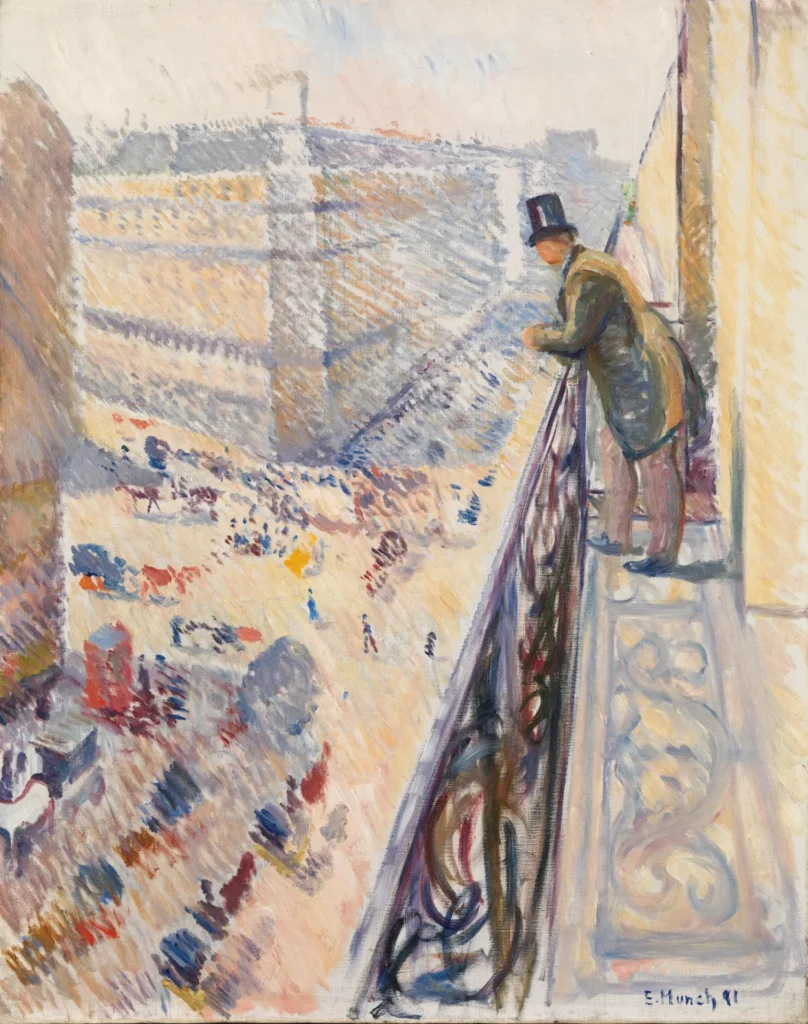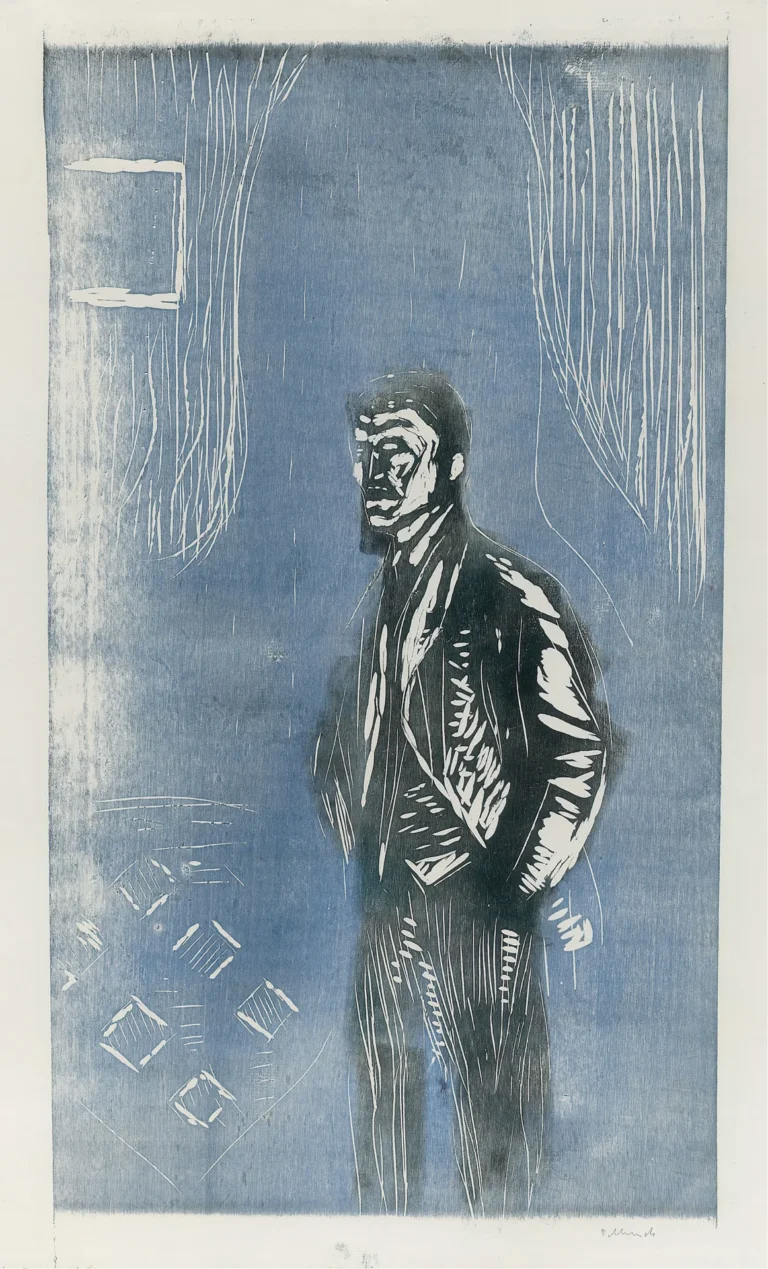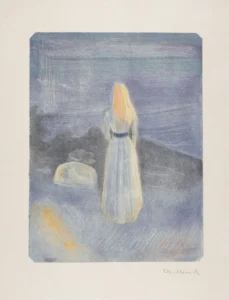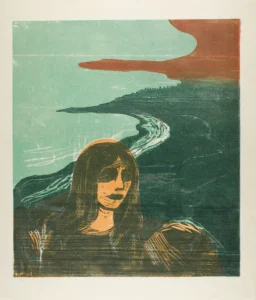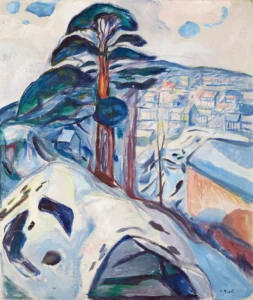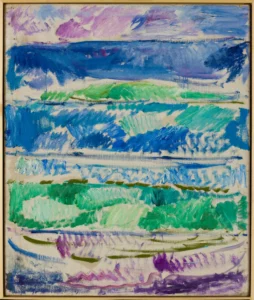Rue Lafayette (1891)
In Rue Lafayette, Edvard Munch captures the bustling life of Paris from a high balcony with a somber figure observing the scene below. This oil on canvas painting, painted in 1891, showcases Munch’s experimental Impressionist brushwork, marked by rapid strokes that evoke movement and energy. The contrast between the solitary figure and the vibrant street reflects themes of alienation, a precursor to Munch's iconic emotional depth found in his later works. The painting is a testament to the urban transformation of Paris and the modernity that influenced artists of the era.
Year 1891
About the Artwork
Edvard Munch painted Rue Lafayette during the spring of 1891 while living in Paris. This work was inspired by the view from his own residence at 49 Rue Lafayette, offering a unique perspective on the vibrant intersection of urban life and personal solitude. The painting embodies Munch's experimentation with Impressionist techniques, diverging from traditional pointillism to embrace dynamic brush strokes to depict movement. This was a period of great artistic evolution for Munch as he navigated the bustling streets and significant historical changes brought about by the transformations under Napoleon III and Baron Haussmann. The contrast between the observer and the bustling activity below encapsulates feelings of alienation—themes that would profoundly influence Munch's future creations. Rue Lafayette was later acquired by the National Gallery in Oslo in 1933, cementing its place in art history.
Did You Know
During the time he created Rue Lafayette, Edvard Munch was significantly influenced by Impressionism, which can be seen in the rapid, dynamic brushwork employed throughout the piece.
Rue Lafayette foreshadows Munch’s preoccupation with themes of alienation and existential angst, which would dominate his later works, such as ‘The Scream’.
The painting was acquired by the National Gallery in Oslo in 1933, marking its importance in Norway’s national art collection and ensuring its conservation for future generations.




